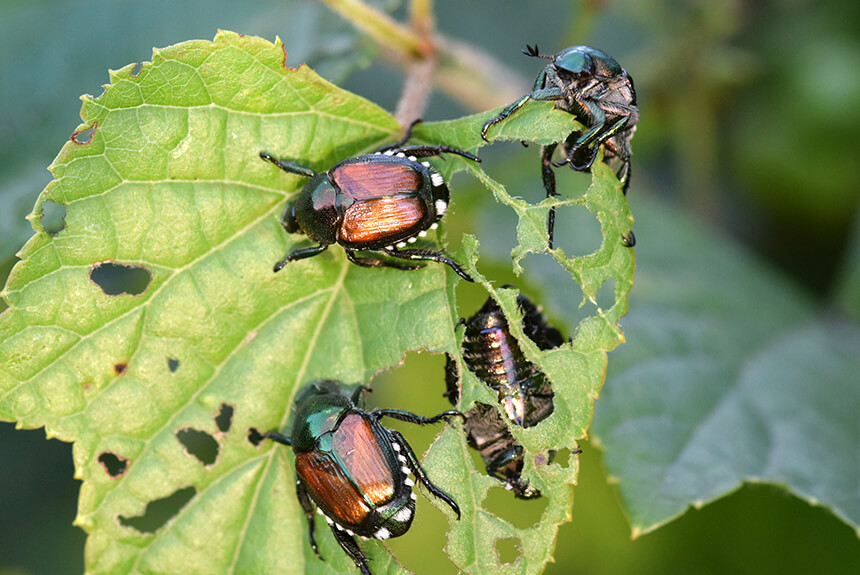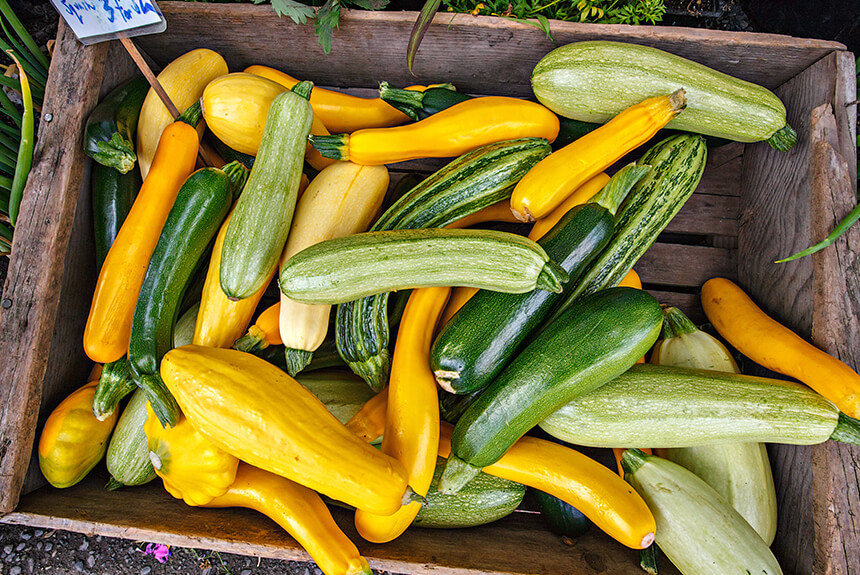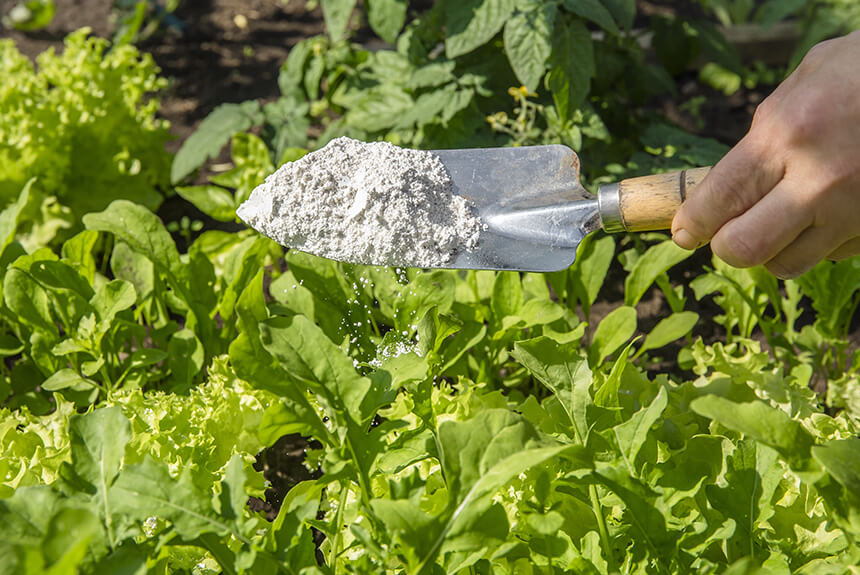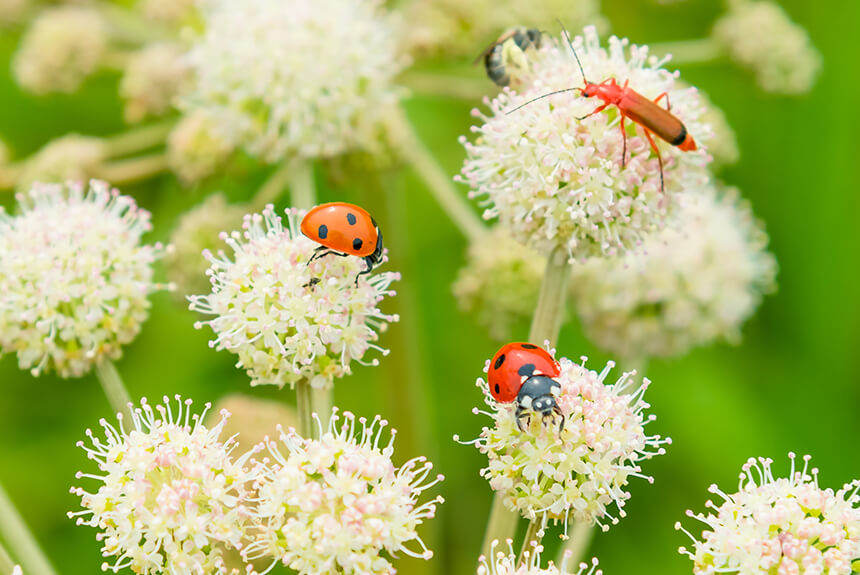As we enter July, summer is in full swing! July is probably one of my favorite times of the year, minus the heat that is. Unless I am floating in a pool, ocean or the lake, I am not a big fan of heat. Give me nice, 70–75-degree days anytime. But of course, the heat is necessary, especially if you are a farmer or a gardener. The heat helps your vegetables and fruits flourish. Farmers Markets are in full swing, overflowing with summers abundance of crops!!! Eating fresh grown veggies and fruits is another one of the reasons I love July, along with admiring the gorgeous flowers that I purchased at the Marshall County Co-op earlier in the spring.
And speaking of fruits and vegetables, let’s talk a little about some of the issues that our farmers and our gardeners all seem to have in common….trying to keep damaging pests off their fruits and vegetable plants. Here are some of the problem children:
APHIDS– These 1/6-inch pear-shaped creatures pierce plant tissues to suck out sap. Affected plants often form puckered leaves, show stunted growth and can die without treatment. Moreover, the honeydew (a sweet, sticky substance secreted by aphids) promotes the growth of sooty mold and attracts ants, which protect the aphids because they want the honeydew.
CUTWORMS– These are fat, one-inch-long moth larvae that hide beneath leaves or within the top layer of soil during the day and feed on plants at night. They typically attack stems, the first part of a plant they encounter, so if a newly planted seedling has been felled like a tree in the forest, that’s a sign of cutworms.
JAPANESE BEETLE – The adult insects area metallic-blue and bronze, ½ “ beetles. The larvae are fat, white grubs with brown heads. Beetles skeletonize leaves and chew flowers. Grubs feed on the roots of grass and other plants.

SCALES – You’re most likely to notice adult female scale insects, which looks like bumps on plant stems, leaves or fruit. Males are small flying insects, while larvae are tiny, soft crawling insects. YUK. Scale insects suck plant sap, weakening plants and causing foliage to turn yellow & drop off. In addition, honeydew is deposited on leaves and fruit. It is unsightly and can foster disease.
SLUGS – are slimy, soft-bodied mollusks, usually about an inch long & either dark brown or gray in color. They hide out in shady spots during the day and do most of their feeding at night. They’ll eat just about any garden plant, leaving unsightly holes in the foliage. While common in moist, humid climates, they’re more prevalent if the weather has been rainy. they’re more prevalent if the weather has been rainy.
SPIDER MITES– These tiny pests, which are related to spiders, feed on plant juices. In large numbers, they zap a plant’s vitality by causing leaves to turn yellow, brown or gray and drop off. Other telltale signs are fine silk webs on the undersides of leaves.
SQUASH BUGS – Squash bugs are most commonly found on squash plants, as well as pumpkins. They’re large, look as if they’re wearing armor, and resemble stink bugs. They suck juices out of plants and cause wilting.

SQUASH VINE BORERS– You’re more likely to spot damage to your squash plants than you are to see the squash vine borers themselves. That’s because these 1-inch-long white caterpillars feed from inside the stems. Plants wilt drastically, as if they’re thirsty for water. Eventually, the whole vine dies. In addition to wilting, look for a swollen stem and small piles of sawdust-like material called frass (debris or excrement produced by insects), on the ground.
TOMATO HORNWORM – These bright-green, heavily striped caterpillars looks like something from a sci-fi show, especially with the horn-like tails. They eat the foliage of tomatoes primarily, but also peppers, potatoes and eggplants.
WHITE FLIES – These tiny sucking insects weaken and stunt plant growth and also leave behind a sticky honeydew that leads to fungal disease on leaves.
With so many insects out there, rest assured that the Marshall County Co-Op has the solutions! They have many varieties and types of insect repellants along with ideas and solutions for other garden related issues. Let them help you with your war against these insects! All you have to do is call or drop by and ask one of the many plant specialists!! Don’t worry, you will not be “bugging them”….

See you at the Co-op!


Leave a Reply